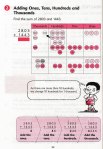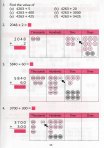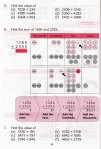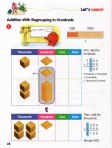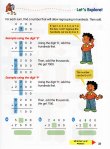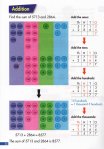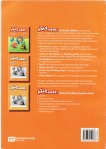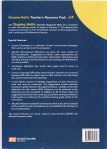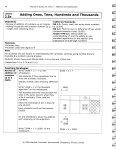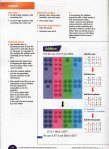I had coffee with another fan of Singapore Math this week and he loaned me some supplemental materials from his travels to Popular Books in Singapore. These two problems come from Accelerated Learning Primary Mathematics 3 by Ching Kheng Huat published in 1999.
The front page states:
In this book, “Accelerated Learning” fosters in pupils the ability to learn faster, to remember more and to think creatively.
The Ministry of Education has initiated IT in education for pupils. To make time for IT, pupils need to learn faster to cover the syllabus. And this requires ACCELERATED LEARNING – a new dimension in pedagogical skills. MOE has also emphasized the need to develop CREATIVE THINKING, which we have incorporated in this book.
The book has seven pages of “Infographic Images” at the beginning (visual dictionary of terms), then practice pages for 12 units. Each unit of six to seven pages has:
- two worked examples
- multiple choice practice
- short answer practice
- problem sums practice
- creative thinking problem (one or two)
Here are the Creative Thinking problems from the unit on fractions:

And a Creative Thinking problem from the unit on time:
It takes 4 h 15 min to repair 3 computer. Repairing a radio takes 47 minutes less that the time needed to repair a computer. If a worker works 9 hours a day, he needs to complete repairing 10 items that can include both computers and radios. How many computers can he repair if he needs to repair as many computers as possible?
Do you feel that these problems will help students “develop creative thinking” ?
